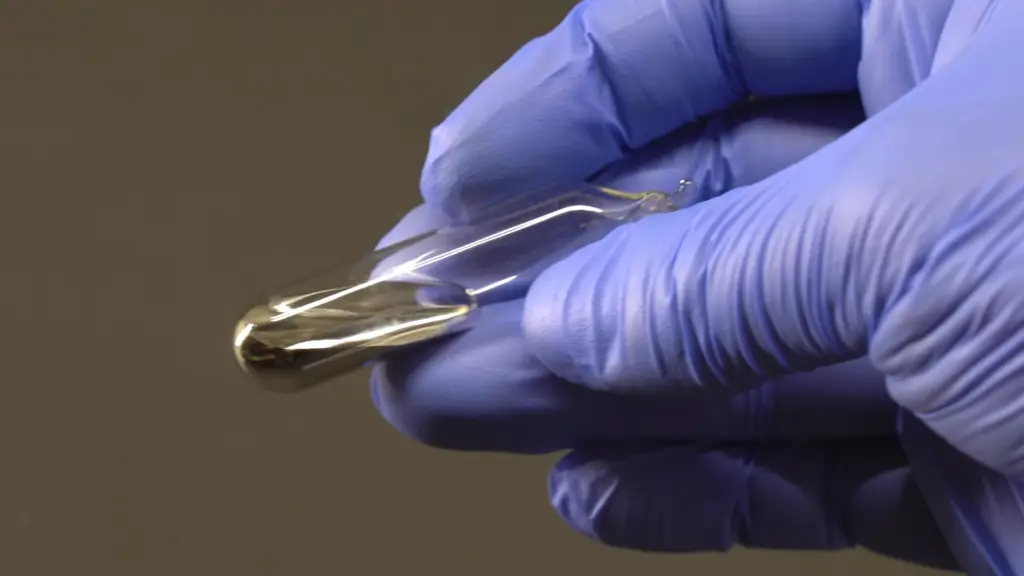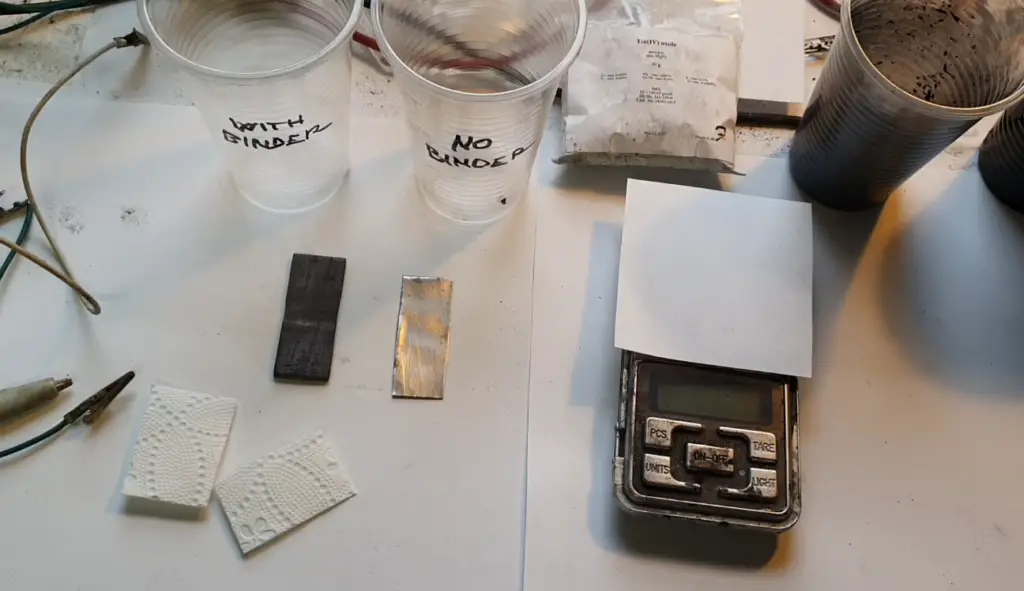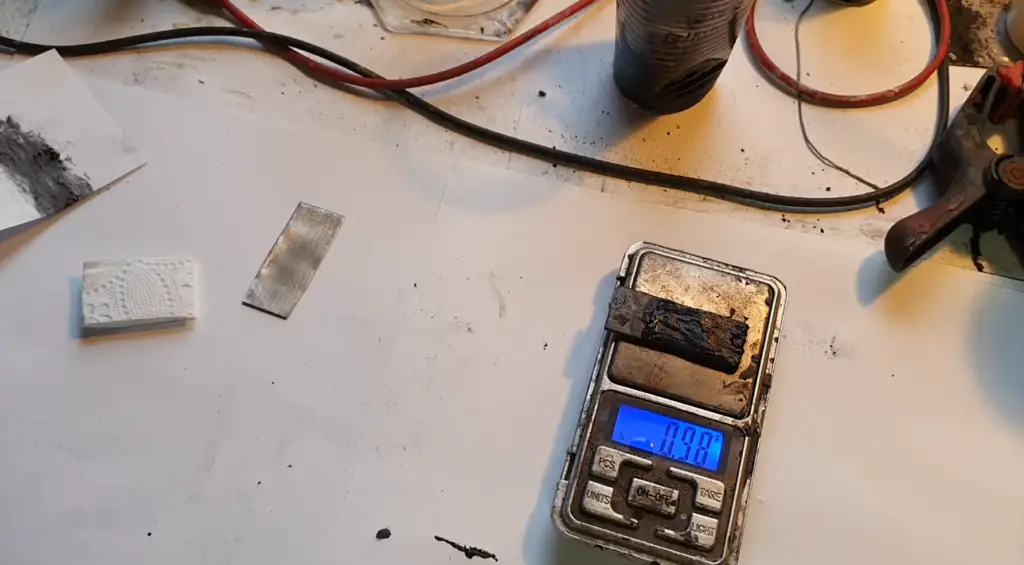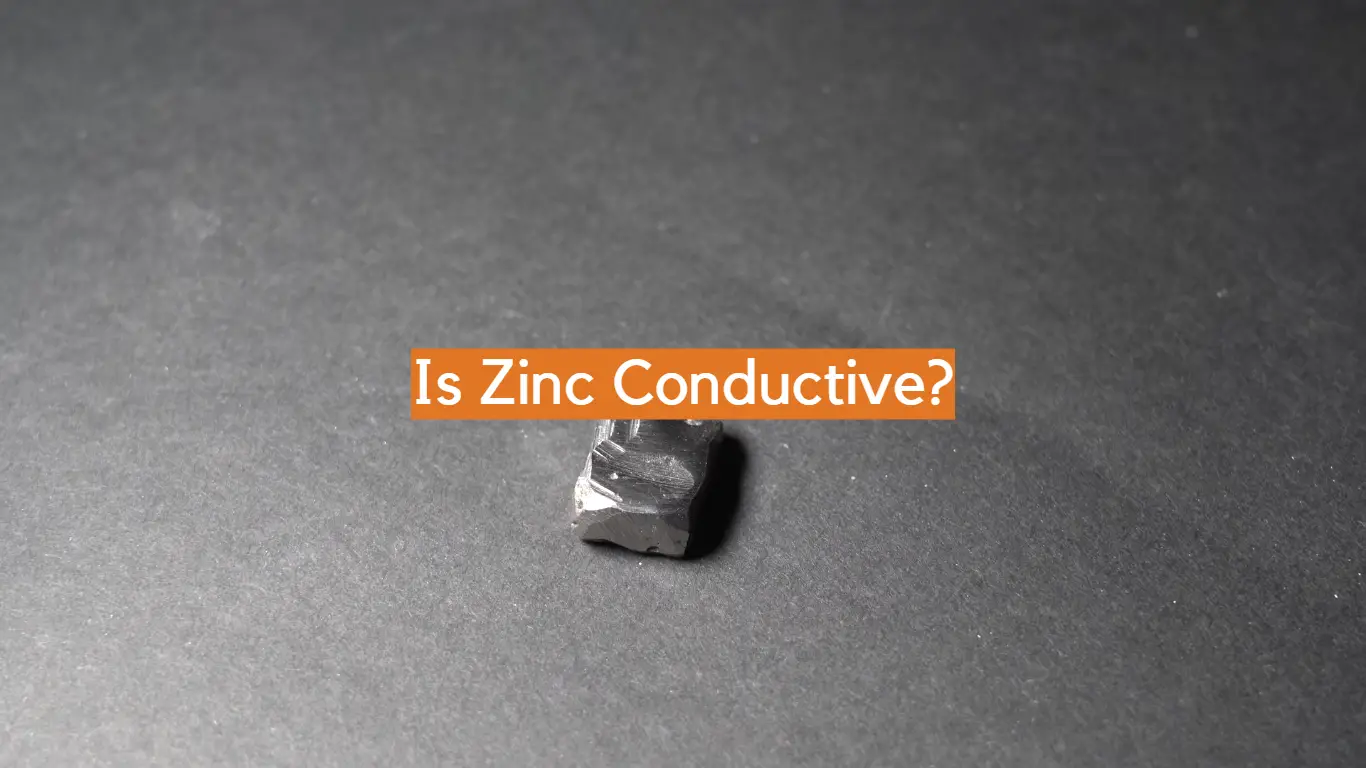Zinc, a versatile chemical element, holds a crucial place in various industrial applications, but its conductive characteristics remain a subject of interest. In this article, we will explore the electrical conductivity of zinc and shed light on the factors that determine its ability to conduct electricity. Delving into its electronic structure, metallic bonding, and crystal lattice arrangement, we will uncover why zinc is considered a conductor of electricity.
From its role in electrical hardware to its applications in batteries and electroplating, we will delve into the practical implications of zinc’s conductivity. Let’s embark on a journey to unravel the mystery behind the electrical behavior of this fascinating element.
What Is Zinc?
Here are some key points about zinc:
- Occurrence: Zinc is a transition metal and is not found in its pure elemental form in nature. Instead, it is primarily found in the Earth’s crust as various zinc ores, such as sphalerite (zinc sulfide) and smithsonite (zinc carbonate);
- Importance for Living Organisms: Zinc is an essential trace element, meaning it is required in small amounts but plays a vital role in various biological processes. It is a cofactor for numerous enzymes, which means it assists these enzymes in carrying out their specific functions in the body;

Role in the Human Body
Zinc is involved in a wide range of physiological functions, including:
- Immune System: It is essential for the proper functioning of the immune system, helping the body defend against infections and diseases;
- DNA Synthesis and Repair: Zinc plays a role in DNA synthesis and repair processes, which are vital for cell division and growth;
- Wound Healing: It contributes to the healing of wounds and is involved in tissue repair processes;
- Sense of Taste and Smell: Zinc is necessary for the proper functioning of taste and smell receptors;
- Cellular Growth and Development: It is important for the growth and development of cells in the body;
Sources of Zinc
Zinc can be obtained from various dietary sources, including:
- Meat: Especially red meat, poultry, and seafood;
- Legumes: Beans, lentils, and chickpeas;
- Nuts and Seeds: Such as cashews, pumpkin seeds, and almonds;
- Dairy Products: Milk and cheese;
- Whole Grains: Wheat, rice, and oats;
- Fortified Foods: Certain breakfast cereals may be fortified with zinc;
Zinc Deficiency
Inadequate intake or absorption of zinc can lead to zinc deficiency, which can cause a range of health issues such as impaired immune function, delayed wound healing, growth retardation, hair loss, and skin problems [2].
Supplements
In some cases, zinc supplements may be recommended to address deficiencies, but it’s essential to consult a healthcare professional before starting any supplementation.
Remember that while zinc is vital for health, excessive intake of zinc can also be harmful. It is essential to maintain a balanced and varied diet to ensure an adequate intake of this essential mineral.
Structure And Bonding Of Zinc
Zinc (Zn) is a chemical element with the atomic number 30 and is a member of the d-block elements on the periodic table [3]. It exhibits a typical metallic structure and bonding characteristics, which are common to most transition metals.

Structure:
- Atomic Structure: Zinc has a relatively simple atomic structure. It has 30 protons in its nucleus, surrounded by 30 electrons in various energy levels or shells. The first two energy levels (K and L shells) are complete with 2 and 8 electrons, respectively, and the remaining 18 electrons fill up the M and N shells;
- Crystal Structure: In its solid state, zinc forms a crystal lattice structure. It adopts a hexagonal close-packed (HCP) structure, which means the atoms are arranged in a compact manner in layers, with each layer being slightly off-center from the one below it. This arrangement results in a close-packed structure with efficient packing of atoms;
Bonding:
- Metallic Bonding: Like other transition metals, zinc exhibits metallic bonding. In metallic bonding, the valence electrons of the metal atoms are relatively delocalized, meaning they are not firmly bound to any particular atom. Instead, they form a “sea of electrons” that can move freely throughout the crystal lattice. This electron delocalization gives rise to several characteristic properties of metals, such as electrical and thermal conductivity, malleability, and ductility;
- Covalent Character: Although metallic bonding dominates in zinc, there is also some covalent character in its bonding. This is due to the overlap of partially filled atomic orbitals of the zinc atoms, allowing some sharing of electrons between adjacent atoms. This covalent component contributes to the stability and strength of the metallic lattice;
- Alloy Formation: Zinc is often used as an alloying element in combination with other metals. For example, it forms brass when combined with copper and bronze when combined with tin. The formation of alloys is possible due to the ability of zinc to mix with other metals and maintain its metallic bonding characteristics;
Properties Of Zinc
Zinc is a versatile chemical element with a wide range of properties that make it valuable and essential for various applications.
Physical Properties:
- Appearance: In its pure form, zinc has a bright bluish-white color;
- Density: Zinc is relatively dense, with a density of about 7.14 grams per cubic centimeter;
- Melting Point: It has a relatively low melting point of approximately 419.5 degrees Celsius (787.1 degrees Fahrenheit) [4];
- Boiling Point: Zinc boils at around 907 degrees Celsius (1665 degrees Fahrenheit);
- State at Room Temperature: At room temperature, zinc is a solid metal;
Chemical Properties:
- Reactivity: Zinc is a moderately reactive metal. It reacts slowly with atmospheric oxygen, forming a protective layer of zinc oxide (ZnO) that prevents further corrosion;
- Corrosion Resistance: Zinc is known for its excellent corrosion resistance, making it a popular choice for coating other metals through processes like galvanization to protect them from rust and corrosion;
- Acid Reactivity: Zinc reacts with strong acids, such as hydrochloric acid (HCl), producing hydrogen gas (H2) and zinc chloride (ZnCl2) [5];

Alloying Capability
Zinc is often used as an alloying element in combination with other metals. It forms alloys like brass (zinc and copper) and bronze (zinc and tin). These alloys exhibit different properties and have a variety of applications.
Biological Role
As mentioned earlier, zinc is an essential trace element for living organisms, including humans. It plays a critical role in various biological processes, such as enzyme function, immune system support, and DNA synthesis.
Applications
The largest use of zinc is in galvanizing steel and iron to protect them from corrosion. This process involves coating the metal with a layer of zinc, either through hot-dip galvanizing or electroplating:
- Zinc is used in the production of various alloys, including brass, bronze, nickel silver, and die-casting alloys;
- It is utilized in batteries, such as zinc-carbon batteries and zinc-air batteries;
- Zinc oxide is used in the manufacturing of rubber, paint, ceramics, and cosmetics
- Zinc compounds have applications in medicine, agriculture, and industry;
About Zinc Conductivity:
Zinc, a versatile chemical element, not only boasts exceptional corrosion resistance but also possesses noteworthy electrical conductivity properties. With its atomic number 30, zinc finds application in various electrical components and systems. Understanding its electric conductivity is pivotal to harnessing its potential in the realm of electronics.
What is Electric Conductivity?
Electric Conductivity of Zinc
Zinc is considered a good conductor of electricity, though not as efficient as some other metals like copper or silver. Its electrical conductivity is around 27% of that of copper. Nevertheless, zinc’s relatively lower cost, along with its other beneficial properties, makes it an attractive alternative in various applications where high electrical conductivity is not a primary concern.

Applications in Electronics:
- Batteries: Zinc-carbon batteries and alkaline batteries utilize zinc as one of their primary components. The flow of electrical current between the anode and cathode is facilitated by the presence of zinc, making it an integral part of these widely used batteries;
- Electroplating: The electrical conductivity of zinc is essential in electroplating processes. During galvanization, for example, zinc coatings are applied to iron or steel surfaces electrochemically. The electrical conductivity of zinc enables efficient and uniform coating, providing excellent corrosion protection;
- Semiconductor Industry: Zinc is occasionally used in the semiconductor industry for specific applications. While it may not be as prevalent as silicon or other semiconductor materials, its properties make it suitable for certain niche uses;
- Electrical Hardware: Zinc is incorporated into various electrical hardware components, such as connectors, terminals, and electrical switches. Its combination of electrical conductivity and corrosion resistance makes it an advantageous choice for these purposes;
Heat Conductivity of Zinc
Apart from its electrical properties, zinc also exhibits noteworthy heat conductivity characteristics. Heat conductivity, or thermal conductivity, refers to a material’s ability to conduct and transfer heat.
Zinc is a relatively good thermal conductor among metals. It has a thermal conductivity of approximately 116 watts per meter kelvin (W/(m·K)), which is lower than that of metals like copper or aluminum, but higher than stainless steel [7].
Applications in Heat Management:
- Heat Exchangers: Zinc’s heat conductivity makes it a suitable material for certain types of heat exchangers, where it facilitates the transfer of heat from one fluid to another;
- Alloys for Die Casting: The heat conductivity of zinc is considered in the design and manufacturing of die-cast zinc-alloy components. This property helps ensure efficient heat dissipation during the casting process and subsequent use of the product;

Is Zinc A Good Conductor And Why?
Zinc is considered a good conductor of electricity, although it is not as efficient as some other metals like copper or silver. The reason behind zinc’s relatively good conductivity lies in its electronic structure and crystal lattice arrangement.
Electronic Structure
In its atomic structure, zinc has 30 electrons, distributed among different energy levels or shells. The outermost shell, known as the valence shell, contains two electrons. These valence electrons are loosely bound to the zinc atom and are relatively free to move within the crystal lattice when an electric field is applied.
Metallic Bonding
Zinc, like other metals, exhibits metallic bonding. In this type of bonding, the valence electrons are delocalized, meaning they are not bound to any specific atom but are shared collectively among all the atoms in the metal. This results in a “sea of electrons” that flows through the crystal lattice when an electric potential is applied. This delocalized electron movement is responsible for electrical conductivity in metals.

Crystal Lattice Structure
Zinc forms a hexagonal close-packed (HCP) crystal lattice structure. In this arrangement, the zinc atoms are closely packed together, with each layer slightly offset from the one below it. This type of structure allows for efficient electron movement through the lattice, further contributing to its electrical conductivity.
Despite being a good conductor, zinc is not as widely used for electrical conductivity applications as metals like copper or aluminum, primarily due to its lower conductivity compared to these metals. Copper, in particular, is renowned for its excellent electrical conductivity and is often the preferred choice for high-performance electrical components and systems.
However, zinc finds its niche in various applications where its other properties, such as corrosion resistance and affordability, outweigh the need for high electrical conductivity. Some common uses of zinc, based on its combination of properties, include galvanizing steel to protect against corrosion, battery production, electroplating, and certain electrical hardware components.
Is Zinc An Insulator?
No, zinc is not an insulator; it is a metal and falls into the category of electrical conductors.
As mentioned earlier, zinc is considered a good conductor of electricity due to its metallic bonding and the presence of delocalized electrons. In metals, such as zinc, the valence electrons are relatively free to move within the crystal lattice, allowing the flow of electric current when a voltage is applied. This characteristic sets metals apart from insulators.
Insulators, on the other hand, are materials that do not conduct electricity effectively. In insulators, the valence electrons are tightly bound to their respective atoms, and they are not capable of carrying an electric current through the material. Examples of insulators include materials like rubber, plastic, glass, and ceramic.
The distinction between conductors (like zinc) and insulators is essential in various electrical applications. Metals are commonly used in electrical wiring, electrical components, and circuitry because of their ability to conduct electricity. Insulators, on the other hand, are used to prevent the flow of electric current and to insulate electrical components and systems.

Does Zinc Conduct Electricity As A Liquid?
No, zinc does not conduct electricity as a liquid. In its liquid state, zinc loses its metallic bonding and the characteristic free movement of electrons, which are responsible for its electrical conductivity as a solid metal.
When a metal like zinc is in its solid state, its atoms are arranged in a regular crystal lattice structure, and the valence electrons are delocalized, forming a “sea of electrons” that can move freely throughout the lattice. This movement of electrons allows metals to conduct electricity efficiently [8].
However, when metals are heated and reach their melting point, they transition from a solid state to a liquid state. In the liquid state, the crystal lattice breaks down, and the metallic bonding weakens. As a result, the delocalized electrons are no longer able to move freely as they did in the solid state. This loss of electron mobility in the liquid state means that zinc, as a liquid metal, does not conduct electricity.
It’s essential to consider this property of metals when working with liquid metals to ensure proper electrical safety and avoid potential hazards associated with conducting electricity through molten metal.
FAQ:
1. Why does zinc chloride conduct electricity when molten?
Zinc chloride conducts electricity when molten because in the liquid state, the crystal lattice of zinc chloride breaks down, and the ions become mobile.
In its solid state, zinc chloride exists as an ionic compound, with positively charged zinc ions (Zn²⁺) and negatively charged chloride ions (Cl⁻) held together in a regular lattice structure by electrostatic forces.
However, when zinc chloride is heated to its melting point and becomes liquid, the ions gain enough energy to overcome these forces, and they are free to move within the liquid. This mobility of charged particles enables the flow of electric current, making molten zinc chloride a conductor of electricity.
2. Is zinc a poor conductor of heat?
Zinc is not the best thermal conductor among metals, but it is not considered a poor conductor either. It has a thermal conductivity of approximately 116 watts per meter kelvin (W/(m·K)), which is lower than that of metals like copper or aluminum but higher than stainless steel. While there are better thermal conductors available, zinc still possesses sufficient heat conductivity for certain applications.
3. Is zinc a good thermal conductor?
Zinc has a moderate thermal conductivity of approximately 116 W/(m·K), which is considered decent but not exceptional. There are other metals with higher thermal conductivity, such as copper and silver, that are preferred for applications where superior heat conduction is necessary.
4. Is zinc a transition metal?
Yes, zinc is classified as a transition metal. Transition metals are elements found in the d-block of the periodic table, between groups 3 and 12. They are characterized by their partially filled d orbitals and often exhibit a variety of oxidation states and form colorful compounds.
5. Is plated zinc rustproof?
Plated zinc, such as zinc-coated steel through processes like galvanization, provides excellent corrosion resistance. The zinc coating acts as a sacrificial layer, corroding preferentially to protect the underlying steel from rusting. While the plated zinc provides effective rust protection, over time, the zinc layer can eventually corrode as well, but it still significantly prolongs the lifespan of the underlying material.
6. Is zinc an insulator or a conductor?
Zinc is a conductor of electricity. As a metal, zinc possesses the characteristic of metallic bonding, where its valence electrons are delocalized and free to move within the crystal lattice. This delocalization of electrons allows zinc to conduct electricity efficiently.
7. How does zinc conduct electricity?
Zinc conducts electricity due to its metallic bonding. The valence electrons in zinc are not firmly bound to any specific atom but are instead shared collectively among all the atoms in the metal. This creates a “sea of electrons” that can move freely through the crystal lattice when an electric potential is applied, enabling the flow of electric current.
8. Why does zinc conduct electricity?
Zinc conducts electricity because of its metallic bonding and the presence of delocalized electrons. In metals like zinc, the valence electrons are relatively free to move within the crystal lattice, allowing the flow of electric current when a voltage is applied.
9. What is the electrical conductivity of zinc?
The electrical conductivity of zinc is approximately 27% of that of copper. While zinc is a good conductor of electricity, it is not as efficient as some other metals like copper or silver.
10. Is zinc alloy strong?
The strength of zinc alloys depends on the specific alloy composition and its intended application. Some zinc alloys, like those used in die-casting applications, can exhibit good strength and durability. However, compared to certain other metals and alloys, zinc alloys may have lower tensile strength and hardness.
11. Is zinc used in wiring?
Zinc is not commonly used as the primary material for electrical wiring due to its lower electrical conductivity compared to metals like copper and aluminum. Copper is the most prevalent material for electrical wiring due to its excellent electrical conductivity.
12. Is zinc or aluminum more conductive?
Aluminum is a better conductor of electricity than zinc. While both aluminum and zinc are used in various electrical applications, aluminum is more commonly chosen when high electrical conductivity is required.
13. Is zinc a semiconductor?
No, zinc is not a semiconductor. Semiconductors are materials with electrical conductivity between that of conductors (high conductivity) and insulators (low conductivity). Zinc is a metal and falls into the category of conductors, not semiconductors.
14. Does zinc rust in water?
Zinc itself does not rust like iron or steel. Instead, it forms a protective layer of zinc oxide when exposed to air and water, preventing further corrosion. However, zinc coatings on steel or iron can eventually corrode over time, but the corrosion rate is significantly slower than that of the underlying metal.
15. What metal is the least conductive?
Bismuth is one of the least conductive metals. It is a poor conductor of electricity, and its electrical conductivity is lower than most other metals.
16. What type of conductor is zinc?
Zinc is a metallic conductor. Its ability to conduct electricity is attributed to metallic bonding and the delocalization of valence electrons in its crystal lattice.
17. Is zinc a dielectric?
No, zinc is not a dielectric. Dielectrics are insulating materials that do not conduct electricity. Zinc, as a metal, conducts electricity.
18. Is zinc a cathode or anode?
In electrochemical processes, zinc can act as both a cathode and an anode depending on the specific electrochemical cell or system.
For example, in a galvanic cell with a zinc-copper couple, zinc would serve as the anode (site of oxidation) and copper as the cathode (site of reduction). However, in other scenarios, such as during the electrolysis of water, zinc can serve as the cathode, where reduction occurs.
19. Why is zinc used in electrical equipment?
Zinc is used in electrical equipment for various purposes. It is commonly used in battery production, galvanizing steel to protect against corrosion, and as an alloying element in certain electrical hardware components like connectors and terminals. Additionally, zinc’s electrical conductivity and other properties make it valuable in specific electrical and electronic applications.
Useful Video: Zinc – A METAL WHICH GIVES MANHOOD!
References
- https://tampasteel.com/best-metals-conduct-electricity
- https://lambdageeks.com/does-zinc-conduct-electricity/
- https://www.circuitsgallery.com/is-zinc-conductive/
- https://www.tuofa-cncmachining.com/tuofa-blog/is-zinc-conductive.html
- https://www.finishing.com/183/62.shtml
- https://www.ozmo.io/how-zinc-conducts-electricity/
- https://www.thoughtco.com/the-most-conductive-element-606683
- https://www.dorsetware.com/4-of-the-most-conductive-metal-coatings-available/














Leave a Reply